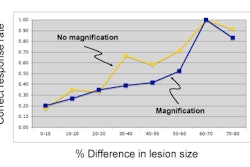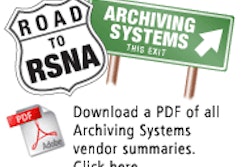A communication and documentation software tool can increase by over 400% the rate at which radiologists can deliver critical radiology results to referring physicians, according to researchers from Cincinnati Children's Hospital Medical Center.
"By deploying new support systems, it's possible to convey and document conveyance of a large number of results, while at the same time improving radiologist productivity," Dr. Mark Halsted said at the recent Society for Imaging Informatics in Medicine (SIIM) meeting in Seattle. "Better conveyance of critical results is actually what the Joint Commission is after in improving patient safety, and better documentation of critical results conveyance improves our ability to respond to complaints or lawsuits."
Believing that automating the process of conveying and documenting the delivery of critical radiology results would significantly improve compliance with the Joint Commission's 2008 National Patient Safety Goals, the institution designed and deployed its RadStream software tool (since licensed by PACS vendor Amicas of Boston).
Halsted described the institution's experience during a scientific session at the SIIM meeting.
After development, the researchers evaluated the system's success in increasing the rate of critical results communication to referring clinicians. The study team electronically searched 12,105 radiology dictations from January 2004 for terms indicating that results were verbally conveyed to clinicians.
Following adoption of the new software tool in July 2005, the researchers then studied 14,914 reports from January 2006 for results conveyance. The study team found that conveyance of critical results was documented in 5% of the cases in 2005.
In the 2006 study period, 5.6% of dictations documented conveyance of critical results; the RadStream system communication logs documented conveyance of critical results in an additional 15.3% of cases. Cases documented and conveyed in both systems were only counted once.
"Use of the new system increased our overall rate of documenting verbal conveyance of critical radiology results from 5% to 20.9%," Halsted said. "What that means, is that if you call us with a complaint or lawsuit, on any case there's a one in five chance that we actually have an audit trail showing that we contacted that referring clinician with that report. And for critical results or important results, that rate is actually much higher since that was more likely to trigger a RadStream event."
The researchers also noted that the system simultaneously reduced interruption to radiologist workflow by 28%, or two to three hours a day. In addition, median outpatient radiology report turnaround times were decreased by 56%, dropping down to 26 minutes, Halsted said.
By Erik L. Ridley
AuntMinnie.com staff writer
July 17, 2008
Related Reading
iTunes manages PDF articles and reference images, July 11, 2008
Speech recognition shrinks report turnaround time, May 29, 2008
Speech recognition and structured reporting bring advantages, drawbacks, May 12, 2008
Voice recognition key to fast report turnaround, April 24, 2008
Autofax reporting breakdown spurs Calgary headlines months later, March 19, 2008
Copyright © 2008 AuntMinnie.com



















